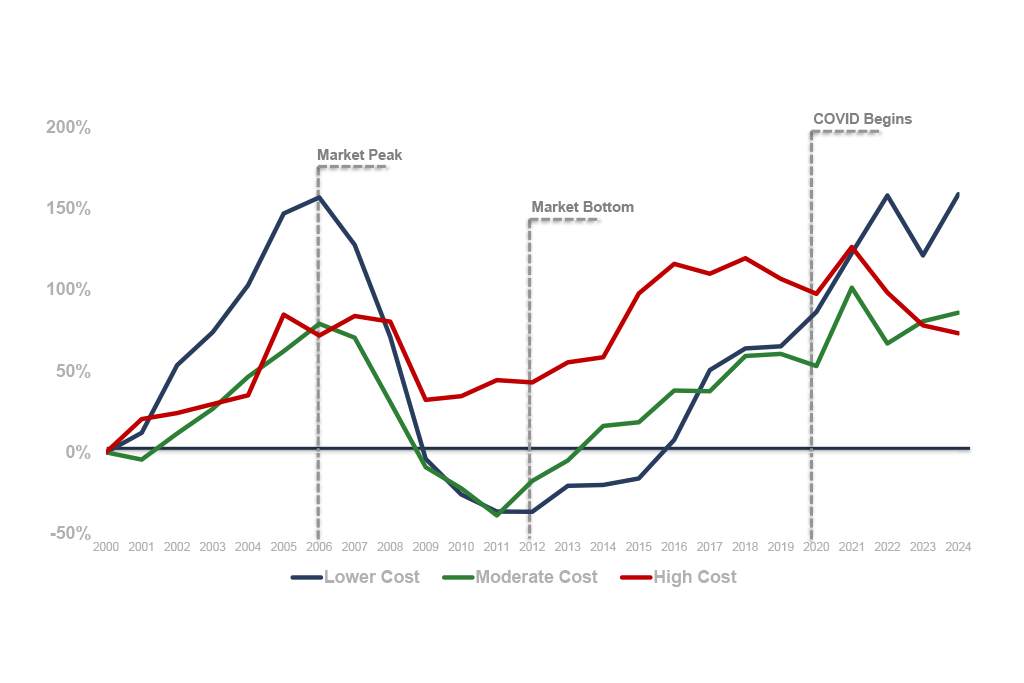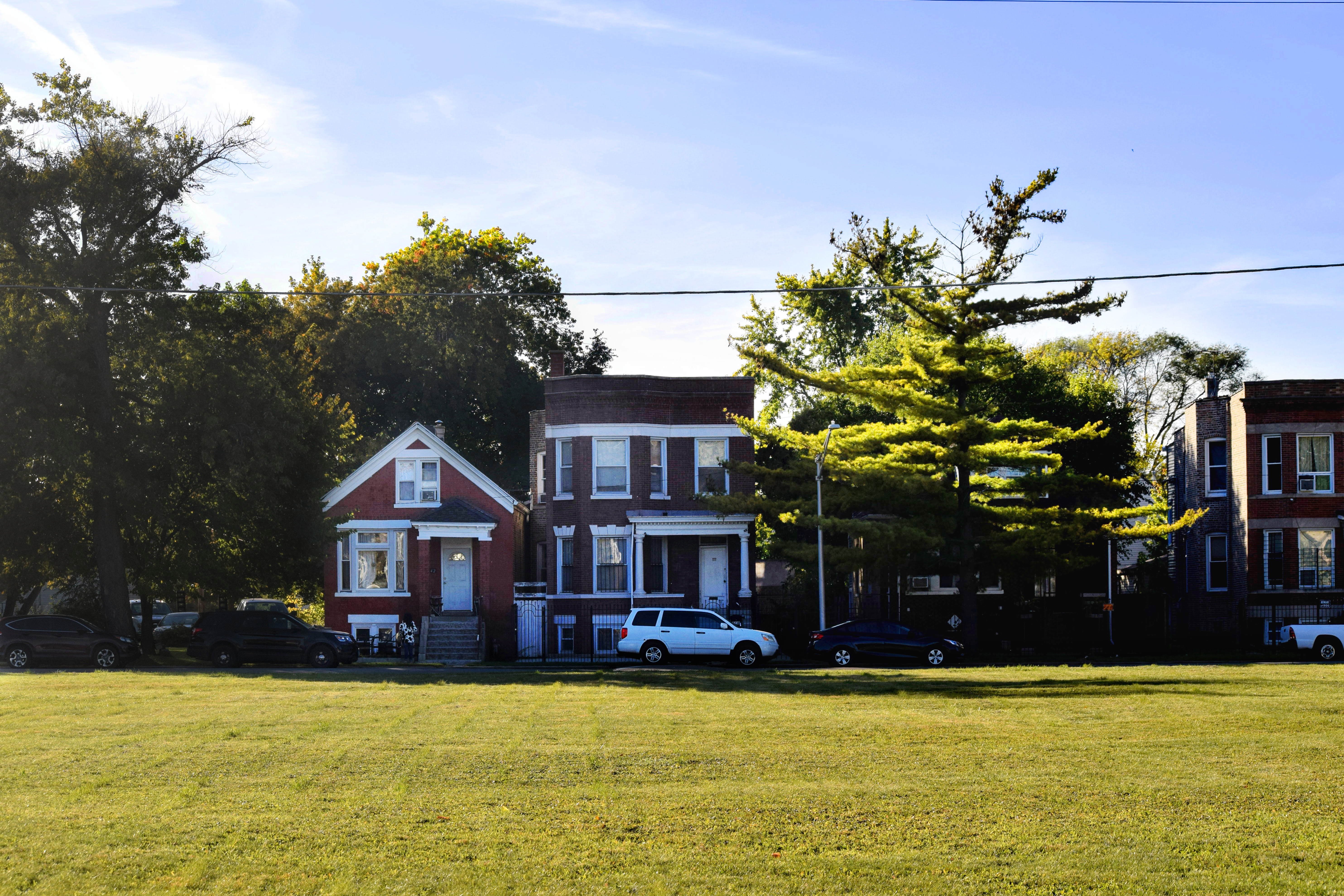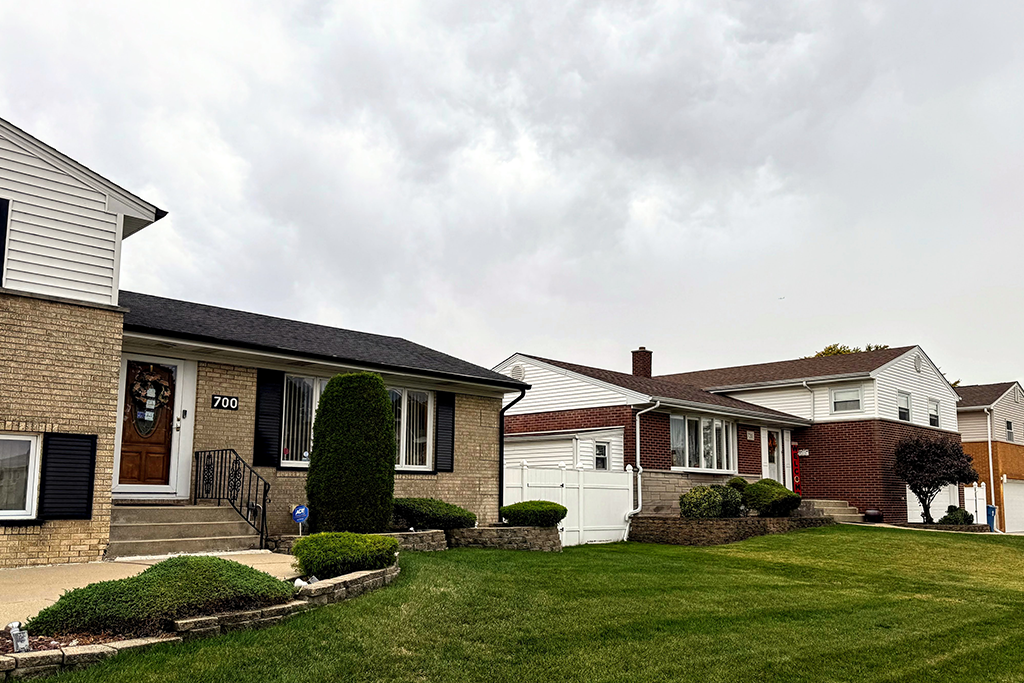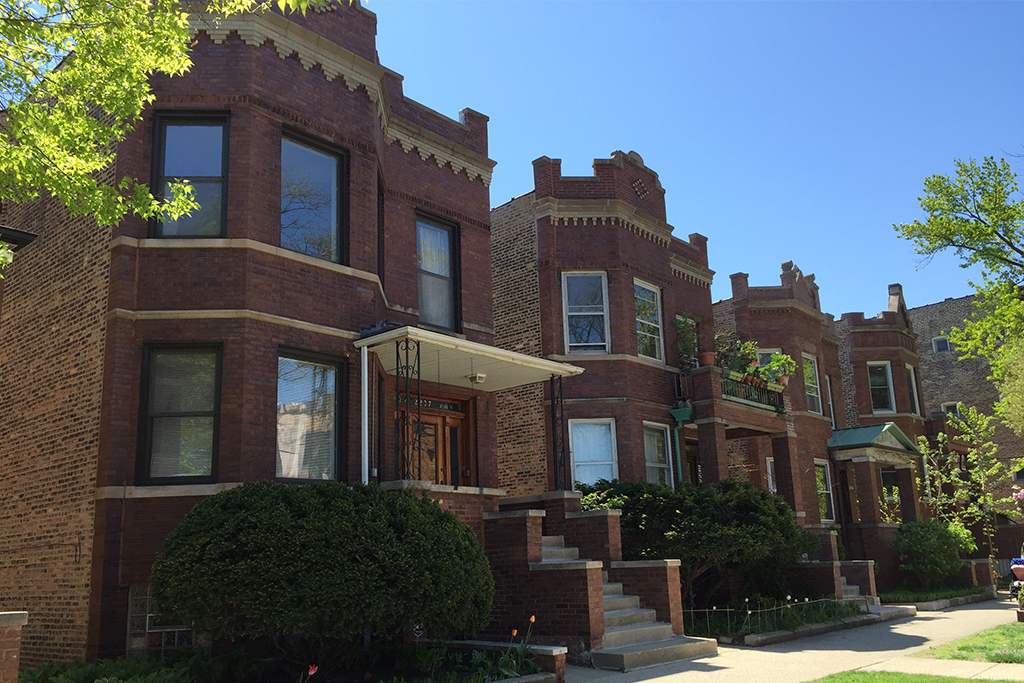Cities are turning to community land trusts in response to the affordable housing crisis.
As cities across the nation struggle to build and sustain housing that is affordable to low- and modest-income families, an often overlooked option is gaining new traction. Community land trusts, also called shared equity programs, first gained attention in Burlington, VT during the 1980s. During that time Bernie Sanders, who was then city mayor, launched the Burlington Community Land Trust, which was later renamed the Champlain Housing Trust. According to land trust expert Anthony Flint, there are over 200 land trusts across the United States today, including the Champlain Housing Trust in Burlington
In Chicago, community land trusts are catching the attention of policymakers as a possible solution to lost affordability and displacement pressures near current or future public investment projects where prices can increase quickly, as shown in our recent report on The 606.
Community land trusts are a collective ownership model where a community-based, non-profit entity actively acquires real estate to take it out of the private market and create a stock of permanently affordable homes. Land trusts can create stable affordable home ownership and rental housing through long-term ownership of land and placing restrictions on owners leasing or developing buildings on that land. In the case of affordable home ownership, land trusts buy buildings and then sell the homes or condominiums to low- or moderate-income homebuyers while retaining the deed to the underlying land. With the help of a subsidy, the families get a mortgage on the home (but not the land) for considerably less than its typical cost in exchange for agreeing that the resale value will be capped. Generally, an owner sells the home back to the community land trust who will then sell to another low- to moderate-income homebuyer. In this way, the home will remain affordable for as long as the community land trust exists.
Although owners are limited as to how much they can profit on the appreciation of the home’s value at the time of sale, there is the potential to gain some equity in addition to recouping money spent on down payments and principal reduction.
The concept of not profiting on a home is a hard one for many Americans. Even Sanders was skeptical at first, according to Slate, “fearing the restrictions on resale would create a form of second-class home ownership.”
But, said founding Champlain Land Trust board member Tim McKenzie in the Slate article, “Bernie eventually saw the sense of it.”
“Creating the first municipally funded community land trust in the nation is one of my proudest accomplishments as Mayor of Burlington,” Sanders said in 2012, after being honored by the National Community Land Trust Network for his work promoting the concept.
Community Land Trusts in Action
Community land trusts have expanded in the past decades as cities struggle to fund and support enough public housing, and as gentrification threatens displacement in some neighborhoods.
In Boston, Dudley Street Neighborhood Initiative rivals Vermont as one of the oldest land trusts in the nation. Begun in 1984, it owns 225 homes in the Roxbury section of Boston, according to its 2015 annual report, with a goal of adding 1,000 more over the next ten years. The neighborhood is a vibrant mix of community gardens, workforce development programs, a charter school, and other civic organizations. However, gentrification is knocking on the door, putting pressure on the land trust.
New York City has one land trust in full operation, the Cooper Square CLT, on the Lower East Side. The city is looking to expand land trusts, and recently began identifying qualified groups that are interested in forming a community land trust.
In Seattle, Homestead Community Land Trust manages a portfolio of 183 homes (as of 2015), according to the Urban Institute. For one of those owners, Sarah Sausner, the opportunity to buy an affordable home meant the end to 15 years of housing struggles, including bouts of homelessness. “I can't describe the relief that I felt after so many years of housing instability,” she told the audience at a hearing on an affordable housing levy in 2016. “Owning my own home affordably has made it possible to form lasting relationships with neighbors and to build a savings account among other things.”
Common Hurdles
As Boston and Vermont and several other examples reveal, land trusts are a viable option to build a truly diverse neighborhood. However, there are hurdles. Banks, for one, are often reluctant to lend, even though land trust loans can help banks meet their Community Reinvestment Act goals. A report by the Federal Reserve Bank of Chicago notes that lenders are often worried that “they were only getting a mortgage for the improvements and not the land.”
Others object to any limitation on appreciation as an infringement of private property rights, while still others see land trusts as hindering the ability of lower-income households to build wealth--though research shows that the majority of sellers do move up to the private market, a sign that they are building equity.
Finally, land trusts make only a small dent in the massive need. According to Slate, the National Community Land Trust Network’s membership only covers 25,000 rental units—smaller than the number of Chicago Housing Authority units at its peak—and 13,000 home-ownership units.
And Yet...
Despite the hurdles, land trusts are one tool in the arsenal to support affordable, healthy neighborhoods, as Vermont has learned. By 2009, Burlington’s land trust had served 630 families in 450 homes over 25 years, according to Brenda Torpey, the land trust’s CEO. A more recent update by the Urban Institute puts the number of homes in its portfolio now at more than 500. Since its inception, 97 families have sold their homes, according to an evaluation by John Emmeus Davis Amy Demetrowitz. All the homes have remained affordable.
“Presently, 25 percent of the city’s rental stock is price restricted by income,” Torpey wrote in 2009. “The sky has not fallen on this little ‘socialist republic’ of Burlington. Our downtown is thriving, our real estate is still among the most valuable in the state, and businesses and developers have not fled to the hills.”
Timing is Everything
Land trusts are a vehicle to provide long term, stable, affordable housing that serves household after household as homeowners build equity and move into the private market. For obvious reasons, land trusts are easier to enact while land is relatively cheap and easy to acquire, and most difficult in competitive, higher-cost real estate markets. For this reason, land trusts may be a vital strategy in the early planning stages of new, large-scale public investment projects, especially in areas where house prices are lower, but expected to rise with the introduction of a new amenity.
In many cities, the risk of rising housing costs and lost affordability is most acute in areas around the development of large public amenities. As more and more cities nationwide embark on major projects to convert underutilized infrastructure into signature public spaces, lost affordability and neighborhood change have been major concerns, as IHS research has demonstrated. Implementing a community land trust in areas where the cost of land has already appreciated would be a major challenge given the competitive housing markets, but, if timed correctly, it is possible that land trusts could prove to be a key strategy to create affordable housing opportunities surrounding future large-scale public investment projects.






